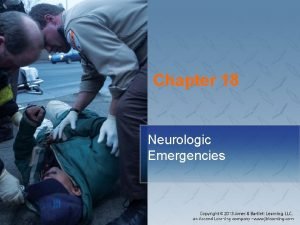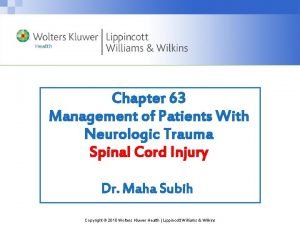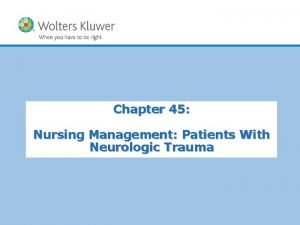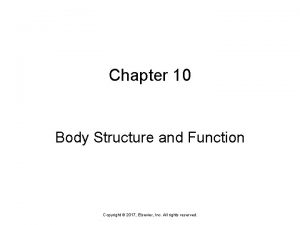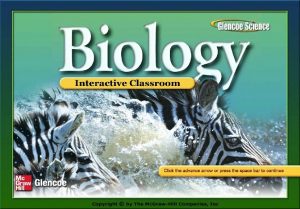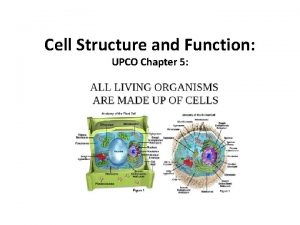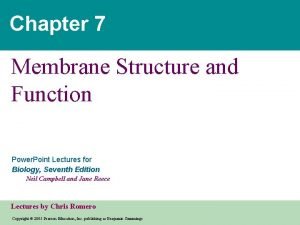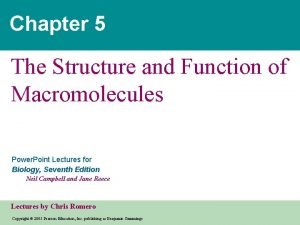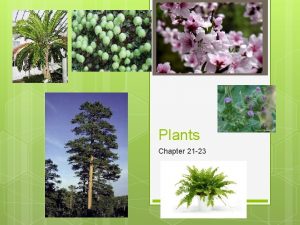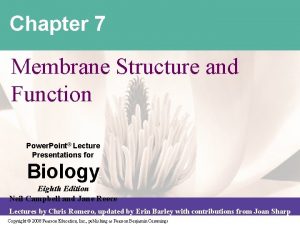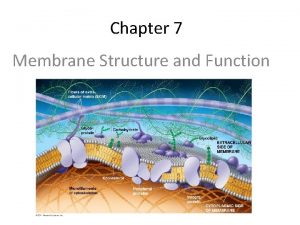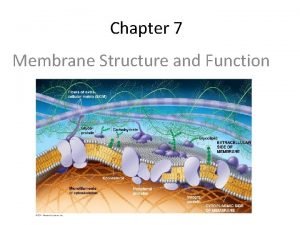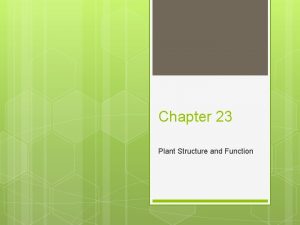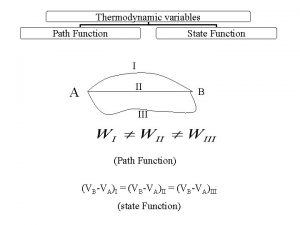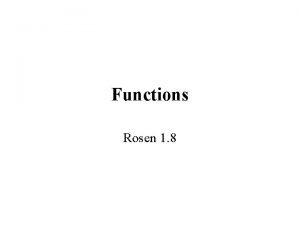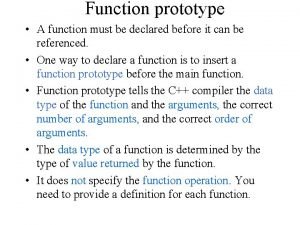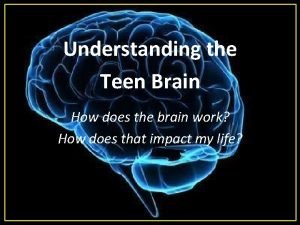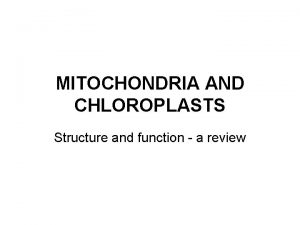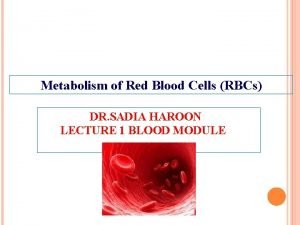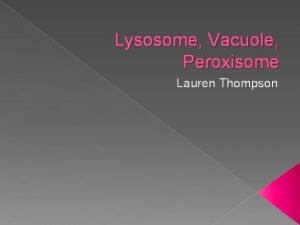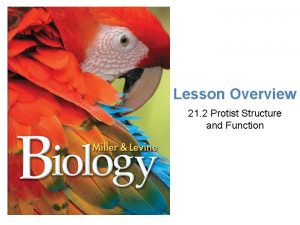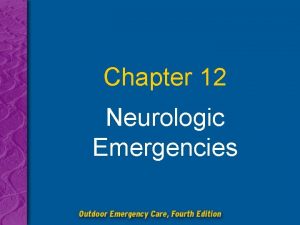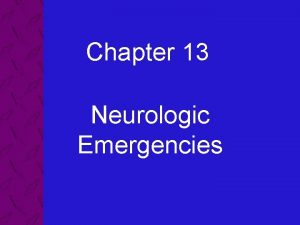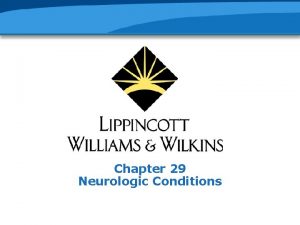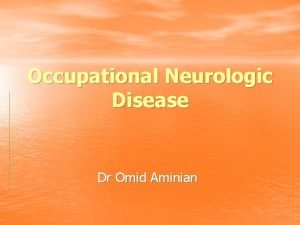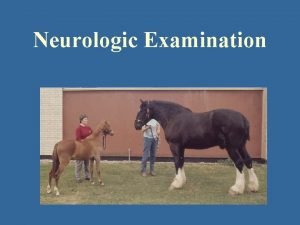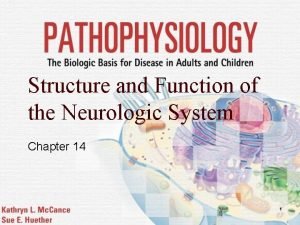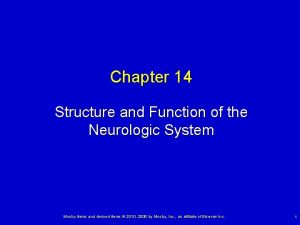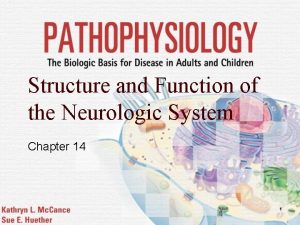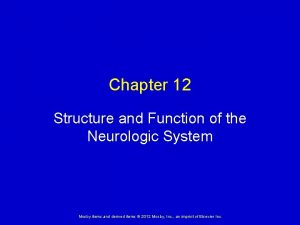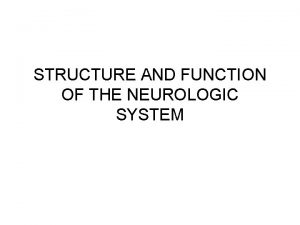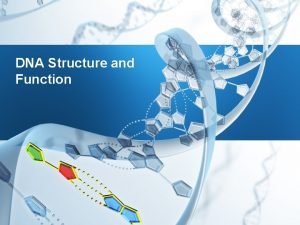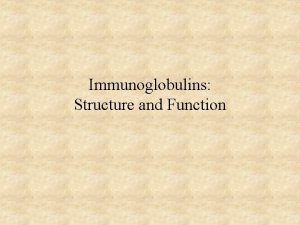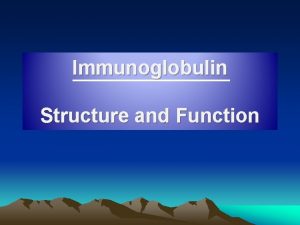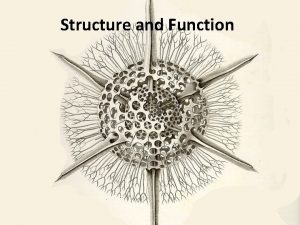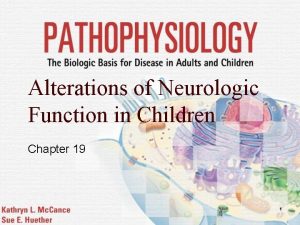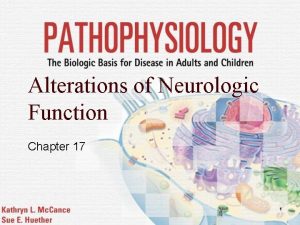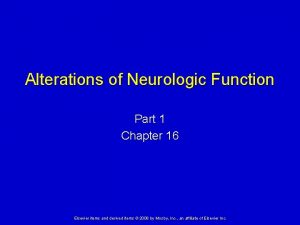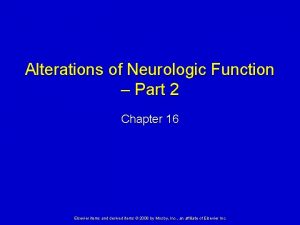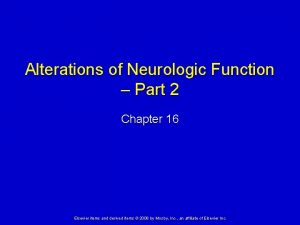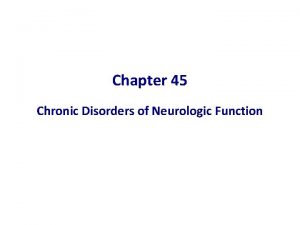Chapter 13 Structure and Function of the Neurologic



































































- Slides: 67

Chapter 13 Structure and Function of the Neurologic System Copyright © 2017, Elsevier Inc. All rights reserved.

Overview of the Nervous System Central nervous system (CNS) Ø Brain and spinal cord Peripheral nervous system (PNS) Cranial nerves Ø Spinal nerves Ø Pathways: • Afferent (ascending) • Efferent (descending) Ø Copyright © 2017, Elsevier Inc. All rights reserved. 2

Overview of the Nervous System (Cont. ) Peripheral nervous system (PNS) (Cont. ) Ø Somatic nervous system • Motor and sensory pathways regulating voluntary motor control of skeletal muscle Ø Autonomic nervous system • Motor and sensory pathways regulating the body’s internal environment through involuntary control of organ systems Sympathetic Parasympathetic Copyright © 2017, Elsevier Inc. All rights reserved. 3

Cells of the Nervous System Neuron Variable size and structure throughout the nervous system Ø Cellular constituents: • Microtubules • Neurofibrils • Nissl substances • Microfilaments Ø Copyright © 2017, Elsevier Inc. All rights reserved. 4

Neuron Three components Cell body (soma) • Located mainly in the CNS • Densely packed cell bodies in the CNS are nuclei • Densely packed cell bodies in the PNS are ganglia Ø Dendrites • Receptive portion of the neuron Ø Axons Ø Copyright © 2017, Elsevier Inc. All rights reserved. 5

Neuron (Cont. ) Axons Carry nerve impulses away from the cell body Ø Axon hillock • Cone-shaped process where the axon leaves the cell Ø body Ø Initial segment of the axon • Area of the axon having the lowest threshold for stimulation, so the action potentials begin at this point Copyright © 2017, Elsevier Inc. All rights reserved. 6

Neuron (Cont. ) Axons (Cont. ) Myelin • Segmented layer of lipid material • Insulating substance • Formed and maintained by the Schwann cell in the PNS Ø Nodes of Ranvier • Regular interruptions of the myelin sheath Ø Copyright © 2017, Elsevier Inc. All rights reserved. 7

Neuron (Cont. ) Axons (Cont. ) Ø Saltatory conduction • The flow of ions between segments of myelin rather than along the entire length of the axon Divergence • Ability of branching axons to influence many neurons Ø Convergence • Branches of numerous neurons converging on one Ø neuron Copyright © 2017, Elsevier Inc. All rights reserved. 8

Structural Classification of Neurons Based on the number of processes extending from the cell body Unipolar Ø Pseudounipolar Ø Bipolar Ø Multipolar Ø Copyright © 2017, Elsevier Inc. All rights reserved. 9

Functional Classification of Neurons Sensory Ø Associational (interneurons) Ø Transmit impulses from sensory receptors to the CNS Transmit impulses from neuron to neuron Motor Ø Transmit impulses from the CNS to an effector organ Copyright © 2017, Elsevier Inc. All rights reserved. 10

Neuroglia Copyright © 2017, Elsevier Inc. All rights reserved. 11

Neuroglia (Cont. ) “Nerve glue” Support the neurons of the CNS: Astrocytes Ø Oligodendroglia (oligodendrocytes) Ø Microglia Ø Copyright © 2017, Elsevier Inc. All rights reserved. 12

Neuroglia From Patton KT, Thibodeau GA: Anatomy & physiology, ed 8, St Louis, 2013, Mosby. Copyright © 2017, Elsevier Inc. All rights reserved. 13

Nerve Injury and Regeneration Wallerian degeneration—degeneration of a nerve fiber that has been separated by injury or disease Ø Distal to the injury • Swelling appears • Neurofilaments hypertrophy • Myelin sheath shrinks and disintegrates • Axon portion degenerates and disappears Copyright © 2017, Elsevier Inc. All rights reserved. 14

Nerve Injury and Regeneration (Cont. ) Proximal to the injury Swelling and dispersal of the Nissl substance Ø Cell increases in metabolic activity, protein synthesis, and mitochondrial activity Ø New terminal sprouts project from the proximal segment Ø Copyright © 2017, Elsevier Inc. All rights reserved. 15

Nerve Injury and Regeneration (Cont. ) Process limited to myelinated axons • Generally only in the PNS Ø Depends on location, type of injury, inflammatory response, and scar tissue formation Ø Copyright © 2017, Elsevier Inc. All rights reserved. 16

Nerve Impulse Neurons generate and conduct electrical and chemical impulses by selectively changing the electrical potential of their plasma membranes and influencing other nearby neurons by the release of neurotransmitters “All or none” response Copyright © 2017, Elsevier Inc. All rights reserved. 17

1. Which of the following neurons transmit impulses from neuron to neuron? A. B. C. D. Interneurons Motor neurons Sensory neurons Unipolar neurons Copyright © 2017, Elsevier Inc. All rights reserved. 18

Synapses Region between adjacent neurons Impulses are transmitted across the synapse by chemical and electrical conduction Presynaptic neurons Ø Proximal to the synapse Postsynaptic neurons Ø Distal to the synapse Copyright © 2017, Elsevier Inc. All rights reserved. 19

Synapses (Cont. ) Neurotransmitters More than 30 substances Ø Excitatory (excitatory postsynaptic potential) Ø Inhibitory (inhibitory postsynaptic potential) Ø Synaptic boutons Synaptic cleft Copyright © 2017, Elsevier Inc. All rights reserved. 20

Synapses (Cont. ) Summation Temporal summation Ø Spatial summation Ø Copyright © 2017, Elsevier Inc. All rights reserved. 21

Central Nervous System Forebrain Ø Midbrain Ø Cerebral hemispheres Corpora quadrigemina, tegmentum, and cerebral peduncles Hindbrain Ø Cerebellum, pons, and medulla Copyright © 2017, Elsevier Inc. All rights reserved. 22

Central Nervous System (Cont. ) Reticular formation Network of connected nuclei that regulate vital reflexes, such as cardiovascular and respiratory function Ø Together with the cerebral cortex is referred to as the reticular activating system Ø Copyright © 2017, Elsevier Inc. All rights reserved. 23

Central Nervous System (Cont. ) Copyright © 2017, Elsevier Inc. All rights reserved. 24

Central Nervous System (Cont. ) Forebrain Ø Telencephalon • Cerebrum Gyri, sulci, and fissures Gray matter and white matter • Brodmann areas • Lobes Frontal: primary motor area, limbic system Parietal: somatic sensory input Occipital: primary visual cortex Temporal: primary auditory cortex, Wernicke • Cerebral nuclei (basal ganglia) Copyright © 2017, Elsevier Inc. All rights reserved. 25

Forebrain From Jarvis C: Physical examination & health assessment, ed 7, St Louis, 2016, Saunders. Copyright © 2017, Elsevier Inc. All rights reserved. 26

Forebrain (Cont. ) Copyright © 2017, Elsevier Inc. All rights reserved. 27

Central Nervous System Diencephalon Epithalamus Ø Thalamus Ø Hypothalamus Ø Subthalamus Ø Copyright © 2017, Elsevier Inc. All rights reserved. 28

Central Nervous System (Cont. ) Midbrain Corpora quadrigemina (tectum) • Superior and inferior colliculi Ø Tegmentum • Red nucleus and substantia nigra Ø Basis pedunculi Ø Copyright © 2017, Elsevier Inc. All rights reserved. 29

Central Nervous System (Cont. ) Hindbrain (metencephalon) Cerebellum: fine motor control, balance and posture Ø Pons: a bridge Ø Myelencephalon Ø Medulla oblongata Copyright © 2017, Elsevier Inc. All rights reserved. 30

Spinal Cord Lies within the vertebral canal and is protected by the vertebral column Connects the brain and the body Ø Conducts somatic and autonomic reflexes Ø Provides motor pattern control centers Ø Modulates sensory and motor function Ø Copyright © 2017, Elsevier Inc. All rights reserved. 31

Spinal Cord (Cont. ) Gray matter Posterior/dorsal horn; substantia gelatinosa Ø Lateral horn Ø Anterior/ventral horn Ø White matter Ø Spinal tracks Copyright © 2017, Elsevier Inc. All rights reserved. 32

Spinal Cord (Cont. ) From Patton KT, Thibodeau GA: Structure and function of the body, ed 15, St Louis, 2016, Mosby. Copyright © 2017, Elsevier Inc. All rights reserved. 33

Spinal Cord (Cont. ) From Crossman AR, Neary D: Neuroanatomy: an illustrated colour text, ed 4, London, 2015, Churchill Livingstone. Copyright © 2017, Elsevier Inc. All rights reserved. 34

Reflex Arc Receptor Afferent (sensory) neuron Efferent neuron Effector Copyright © 2017, Elsevier Inc. All rights reserved. 35

Reflex Arc (Cont. ) From Jarvis C: Physical examination & health assessment, ed 7, St Louis, 2016, Saunders. Copyright © 2017, Elsevier Inc. All rights reserved. 36

Upper and Lower Motor Neurons Upper motor neurons Completely contained within the CNS Ø Control fine motor movement and influence/modify spinal reflex arcs Ø Synapse with interneurons Ø Copyright © 2017, Elsevier Inc. All rights reserved. 37

Upper and Lower Motor Neurons (Cont. ) Lower motor neurons Neurons having direct influence on muscles Ø Cell bodies originate in the gray matter of the spinal cord, but their axons extend into the PNS Ø Copyright © 2017, Elsevier Inc. All rights reserved. 38

Neuromuscular Junction From Damjanov I: Pathology for the health professions, ed 4, St Louis, 2012, Saunders. Copyright © 2017, Elsevier Inc. All rights reserved. 39

Motor Pathways Lateral corticospinal Corticobulbar Reticulospinal Vestibulospinal Rubrospinal Copyright © 2017, Elsevier Inc. All rights reserved. 40

Sensory Pathways Posterior column Anterior spinothalamic tract Lateral spinothalamic tract Copyright © 2017, Elsevier Inc. All rights reserved. 41

2. Which of the following motor pathways is responsible for rapidly contracting extensor muscles? A. B. C. D. Corticobulbar Reticulospinal Vestibulospinal Lateral corticospinal Copyright © 2017, Elsevier Inc. All rights reserved. 42

Protective Structures Cranium Eight bones Ø Encloses and protects the brain and its associated structures Ø Galea aponeurotica • Thick, fibrous band of tissue overlying the cranium Ø between the frontal and occipital muscles, affords added protection to the skull Copyright © 2017, Elsevier Inc. All rights reserved. 43

Protective Structures (Cont. ) Meninges Ø Protective membranes surrounding the brain and spinal cord • Dura mater • Arachnoid • Pia mater Copyright © 2017, Elsevier Inc. All rights reserved. 44

Protective Structures (Cont. ) Cerebrospinal fluid (CSF) and the ventricular system CSF is a clear, colorless fluid similar to blood plasma and interstitial fluid 125 to 150 ml in ventricles Ø Produced by the choroid plexuses in the lateral, third, and fourth ventricles Ø Reabsorbed through the arachnoid villi Ø Copyright © 2017, Elsevier Inc. All rights reserved. 45

Protective Structures (Cont. ) Vertebral column Ø 33 vertebrae • 7 cervical, 12 thoracic, 5 lumbar, 5 fused sacral, and 4 fused coccygeal Ø Intervertebral disks • Nucleus pulposus Copyright © 2017, Elsevier Inc. All rights reserved. 46

Vertebral Column From Solomon E: Introduction to human anatomy and physiology, ed 4, St Louis, 2016, Saunders. Copyright © 2017, Elsevier Inc. All rights reserved. 47

Vertebral Column (Cont. ) From Drake R, Vogl AW, Mitchell AWM: Gray’s anatomy for students, ed 3, London, 2015, Churchill Livingstone. Copyright © 2017, Elsevier Inc. All rights reserved. 48

Blood Supply to the Brain 800 to 1000 ml per minute CO 2 is the primary regulator for CNS blood flow Internal carotid and vertebral arteries Arterial circle (circle of Willis) Copyright © 2017, Elsevier Inc. All rights reserved. 49

Blood Supply to the Brain (Cont. ) From Moses KP, et al: Atlas of clinical gross anatomy, ed 2, Philadelphia, 2013, Saunders. Copyright © 2017, Elsevier Inc. All rights reserved. 50

Blood Supply to the Brain (Cont. ) From Moses KP, et al: Atlas of clinical gross anatomy, ed 2, Philadelphia, 2013, Saunders. Copyright © 2017, Elsevier Inc. All rights reserved. 51

Blood Supply from the Brain The cerebral veins, classified as superficial and deep veins, drain into venous plexuses and dural sinuses and eventually join the internal jugular veins at the base of the skull Head injury: avoid turning head Copyright © 2017, Elsevier Inc. All rights reserved. 52

Blood-Brain Barrier Cellular structures that selectively inhibit certain potentially harmful substances in the blood from entering the interstitial spaces of the brain or CSF Implications for drug therapy because certain types of antibiotics and chemotherapeutic drugs show a greater propensity than others for crossing this barrier Copyright © 2017, Elsevier Inc. All rights reserved. 53

Blood Supply to the Spinal Cord Vertebral arteries Anterior spinal arteries Ø Posterior spinal arteries Ø Aorta Copyright © 2017, Elsevier Inc. All rights reserved. 54

Blood Supply to the Spinal Cord (Cont. ) Redrawn from Rudy EB, editor: Advanced neurological and neurosurgical nursing, St Louis, 1984, Mosby. Copyright © 2017, Elsevier Inc. All rights reserved. 55

Peripheral Nervous System 31 pairs of spinal nerves Names correlate with the vertebral level from which they exit Ø Mixed nerves Ø Arise from the anterior and posterior horn cells of the spinal cord Ø 12 pairs of cranial nerves Ø Sensory, motor, and mixed Copyright © 2017, Elsevier Inc. All rights reserved. 56

Peripheral Nervous System (Cont. ) Fascicles Ø Bundles of myelinated axons in the PNS Rami Plexuses Brachial plexus Ø Lumbar plexus Ø Sacral plexus Ø Dermatomes Copyright © 2017, Elsevier Inc. All rights reserved. 57

Peripheral Nervous System (Cont. ) From Applegate E: The anatomy and physiology learning system, ed 4, St Louis, 2011, Saunders. Copyright © 2017, Elsevier Inc. All rights reserved. 58

Peripheral Nervous System (Cont. ) Copyright © 2017, Elsevier Inc. All rights reserved. 59

Autonomic Nervous System Located in both the CNS and PNS Coordinates and maintains a steady state among the visceral (internal) organs Neurons Preganglionic (myelinated) Ø Postganglionic (unmyelinated) Ø Copyright © 2017, Elsevier Inc. All rights reserved. 60

Autonomic Nervous System (Cont. ) Two divisions Ø Sympathetic • Thoracolumbar division • Responds to stress by mobilizing energy stores and prepares the body to defend itself Ø Parasympathetic • Craniosacral division • Conserves energy and the body’s resources Both systems function, more or less, at the same time Copyright © 2017, Elsevier Inc. All rights reserved. 61

Neurotransmitters and Neuroreceptors of the ANS Sympathetic preganglionic fibers Ø Sympathetic postganglionic fibers Ø Acetylcholine and cholinergic receptors Norepinephrine and adrenergic receptors Parasympathetic preganglionic and postganglionic fibers Ø Acetylcholine and cholinergic receptors Copyright © 2017, Elsevier Inc. All rights reserved. 62

Sympathetic Nervous System Mobilizes energy stores in times of need Ø Receives innervation from cell bodies located from the first thoracic (T 1) through the second lumbar (L 2) regions of the spinal cord Ø Fight or flight response Thoracolumbar division Sympathetic (paravertebral) ganglia Copyright © 2017, Elsevier Inc. All rights reserved. 63

Parasympathetic Nervous System Functions to conserve and restore energy Ø “Rest-and-tranquility” response Receives innervation from cell bodies located in the cranial nerve nuclei and sacral region of the spinal cord Ø Craniosacral division Copyright © 2017, Elsevier Inc. All rights reserved. 64

Parasympathetic Nervous System (Cont. ) Preganglionic neurons travel to ganglia close to the organs they innervate Copyright © 2017, Elsevier Inc. All rights reserved. 65

Function of Autonomic Nervous System Maintains steady state in internal environment Two opposing systems Sympathetic responds to stress by mobilizing energy and prepares for defense Ø Parasympathetic conserves energy and resources Ø Copyright © 2017, Elsevier Inc. All rights reserved. 66

Aging and the Nervous System Decrease in the number of neurons Ø Decreased brain weight and size Lipofuscin and neurofibrillary tangles Slowing of neurologic responses Copyright © 2017, Elsevier Inc. All rights reserved. 67
 Chapter 18 neurologic emergencies
Chapter 18 neurologic emergencies Chapter 17 neurologic emergencies
Chapter 17 neurologic emergencies Lippincott williams & wilkins
Lippincott williams & wilkins Management of patients with neurologic trauma
Management of patients with neurologic trauma Chapter 10 body structure and function
Chapter 10 body structure and function Biology chapter 7 cell structure and function
Biology chapter 7 cell structure and function Chapter 22 plant structure and function answer key
Chapter 22 plant structure and function answer key Chapter 7 cell structure and function section review 7-2
Chapter 7 cell structure and function section review 7-2 Chapter 5 cell structure and function
Chapter 5 cell structure and function Chapter 7 membrane structure and function
Chapter 7 membrane structure and function Chapter 5 the structure and function of macromolecules
Chapter 5 the structure and function of macromolecules Chapter 21 plant structure and function
Chapter 21 plant structure and function Chapter 7 membrane structure and function
Chapter 7 membrane structure and function Flaccid cell
Flaccid cell Chapter 7 membrane structure and function
Chapter 7 membrane structure and function Section 23-4 leaves
Section 23-4 leaves Hát kết hợp bộ gõ cơ thể
Hát kết hợp bộ gõ cơ thể Slidetodoc
Slidetodoc Bổ thể
Bổ thể Tỉ lệ cơ thể trẻ em
Tỉ lệ cơ thể trẻ em Gấu đi như thế nào
Gấu đi như thế nào Tư thế worm breton
Tư thế worm breton Chúa yêu trần thế alleluia
Chúa yêu trần thế alleluia Các môn thể thao bắt đầu bằng tiếng chạy
Các môn thể thao bắt đầu bằng tiếng chạy Thế nào là hệ số cao nhất
Thế nào là hệ số cao nhất Các châu lục và đại dương trên thế giới
Các châu lục và đại dương trên thế giới Công thức tiính động năng
Công thức tiính động năng Trời xanh đây là của chúng ta thể thơ
Trời xanh đây là của chúng ta thể thơ Mật thư anh em như thể tay chân
Mật thư anh em như thể tay chân Phép trừ bù
Phép trừ bù độ dài liên kết
độ dài liên kết Các châu lục và đại dương trên thế giới
Các châu lục và đại dương trên thế giới Thể thơ truyền thống
Thể thơ truyền thống Quá trình desamine hóa có thể tạo ra
Quá trình desamine hóa có thể tạo ra Một số thể thơ truyền thống
Một số thể thơ truyền thống Cái miệng nó xinh thế chỉ nói điều hay thôi
Cái miệng nó xinh thế chỉ nói điều hay thôi Vẽ hình chiếu vuông góc của vật thể sau
Vẽ hình chiếu vuông góc của vật thể sau Nguyên nhân của sự mỏi cơ sinh 8
Nguyên nhân của sự mỏi cơ sinh 8 đặc điểm cơ thể của người tối cổ
đặc điểm cơ thể của người tối cổ Ví dụ giọng cùng tên
Ví dụ giọng cùng tên Vẽ hình chiếu đứng bằng cạnh của vật thể
Vẽ hình chiếu đứng bằng cạnh của vật thể Vẽ hình chiếu vuông góc của vật thể sau
Vẽ hình chiếu vuông góc của vật thể sau Thẻ vin
Thẻ vin đại từ thay thế
đại từ thay thế điện thế nghỉ
điện thế nghỉ Tư thế ngồi viết
Tư thế ngồi viết Diễn thế sinh thái là
Diễn thế sinh thái là Dot
Dot Số nguyên tố là số gì
Số nguyên tố là số gì Tư thế ngồi viết
Tư thế ngồi viết Lời thề hippocrates
Lời thề hippocrates Thiếu nhi thế giới liên hoan
Thiếu nhi thế giới liên hoan ưu thế lai là gì
ưu thế lai là gì Hổ sinh sản vào mùa nào
Hổ sinh sản vào mùa nào Khi nào hổ mẹ dạy hổ con săn mồi
Khi nào hổ mẹ dạy hổ con săn mồi Hệ hô hấp
Hệ hô hấp Từ ngữ thể hiện lòng nhân hậu
Từ ngữ thể hiện lòng nhân hậu Thế nào là mạng điện lắp đặt kiểu nổi
Thế nào là mạng điện lắp đặt kiểu nổi Secondary education meaning
Secondary education meaning Heat capacity is path function
Heat capacity is path function One one onto function
One one onto function Function prototype and function definition
Function prototype and function definition Brain structure and function
Brain structure and function Write the function of seed
Write the function of seed Reviewing key concepts: chloroplasts and mitochondria
Reviewing key concepts: chloroplasts and mitochondria Methaemoglobin
Methaemoglobin What is the function of lysosomes
What is the function of lysosomes Protist structure and function
Protist structure and function
